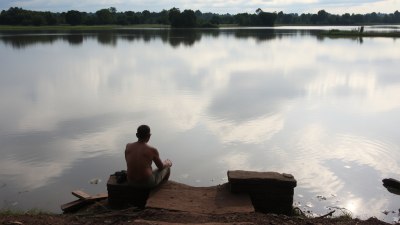How to Pack Smart for Different Climates
Learn how to pack efficiently and appropriately for every type of climate, from tropical heat to snowy mountains.

Image by pressmaster on Freepik
When it comes to packing for a trip, one of the biggest challenges is figuring out how to pack for varying climates. Whether you're headed to a tropical beach, a chilly mountain retreat, or a mix of weather conditions, packing smart is the key to staying comfortable and prepared. By understanding the climate of your destination and strategically packing for it, you can enjoy your trip without overpacking or being caught off guard by unexpected weather. Here’s how to pack smart for different climates, ensuring that you're ready for whatever the weather throws at you.
1. Tropical and Hot Climates – Stay Cool and Comfortable
When packing for hot and tropical destinations, the goal is to stay cool, comfortable, and protected from the sun. Here’s what to pack:
- Lightweight, breathable fabrics: Choose clothes made of lightweight, moisture-wicking fabrics like cotton, linen, or merino wool. These materials allow your skin to breathe and keep you cool, even in the heat.
- UV protection: Bring a wide-brimmed hat and sunglasses to protect your face and eyes from the sun. You should also pack a high-SPF sunscreen to avoid sunburns.
- Swimwear and cover-ups: If you’re visiting a beach or water destination, don’t forget swimwear, a beach towel, and a cover-up for easy access to the beach.
- Comfortable footwear: Flip-flops, sandals, or breathable shoes are perfect for walking around in warm climates. Consider packing water-resistant shoes if you plan on doing activities like hiking or exploring waterfalls.
- Insect repellent: In tropical areas, insects like mosquitoes can be a nuisance. Bring along insect repellent or wear clothing that covers your arms and legs to avoid bites.
2. Cold and Winter Climates – Layer Up for Warmth
If you’re traveling to a cold or snowy destination, layering is the best approach to stay warm and comfortable. Here’s how to pack for winter climates:
- Insulating layers: Pack thermal base layers, such as long underwear, that fit snugly under your clothing. Wool or synthetic materials work best for warmth without bulk.
- Warm outerwear: A high-quality, insulated jacket is essential for staying warm in cold climates. Look for a jacket with waterproof features if you’re expecting snow or rain.
- Layering essentials: A cozy sweater or fleece jacket can serve as a middle layer to trap heat. Be sure to pack thick socks, gloves, scarves, and hats to protect your extremities from the cold.
- Water-resistant footwear: Invest in waterproof boots with good insulation to keep your feet dry and warm during snowy adventures. Also, bring thermal socks for added warmth.
- Hand and foot warmers: Small, disposable hand warmers are an excellent addition for extra warmth during outdoor activities in freezing conditions.
3. Transitional Climates – Prepare for Changing Weather
If you’re traveling to a destination with unpredictable weather, packing for a variety of conditions is key. In transitional climates, where weather can shift from warm to cold or rainy, you'll need versatile pieces that work for both sunny and chilly days. Here’s what to pack:
- Versatile layers: Bring clothing that can easily be layered. Start with a lightweight shirt or sweater and add a jacket, scarf, or cardigan as needed. This will allow you to adjust based on the weather.
- Rain protection: A lightweight, packable rain jacket or poncho is essential for sudden showers. Don’t forget an umbrella for added protection.
- Comfortable walking shoes: Choose shoes that can handle both warmer days and rainy conditions. Waterproof shoes or hiking boots are ideal for transitional climates where you may encounter varied terrain.
- Multi-purpose accessories: A scarf can serve as both a fashion accessory and an extra layer of warmth, while also protecting you from rain or wind. Sunglasses and a hat can help shield you from the sun during unexpectedly bright days.
4. Mountain and High Altitude Climates – Gear Up for Extreme Conditions
If you’re heading to the mountains or high-altitude areas, you’ll encounter variable temperatures and conditions that can range from sunny to freezing. Here’s how to prepare for these climates:
- Thermal layers: Layering is essential in mountainous climates, where temperatures can change dramatically. Start with moisture-wicking base layers and add mid-layers like fleece or insulated jackets.
- Windproof outerwear: Wind and sudden temperature drops are common in mountainous areas, so bring a high-quality windproof and waterproof jacket that can withstand harsh weather.
- Sun protection: High altitudes mean stronger UV rays, so don’t forget sunscreen, lip balm with SPF, and sunglasses to protect your skin and eyes from the sun.
- Sturdy hiking boots: For mountain hikes or rugged terrain, waterproof hiking boots with ankle support are a must. Make sure they’re well-broken in before your trip.
- Altitude sickness prevention: If you're heading to high altitudes, consider packing medication or remedies to help prevent altitude sickness, as well as plenty of water to stay hydrated.
5. Desert Climates – Protect Yourself from the Heat
Deserts can be scorching hot during the day and chilly at night, so packing for extreme temperature shifts is key. Here’s how to stay comfortable in desert climates:
- Light, breathable clothing: Pack lightweight, loose-fitting clothes made of natural fibers like cotton or linen to keep your skin cool and allow air circulation.
- Sun protection: A wide-brimmed hat, sunglasses, and sunscreen are essential for protecting yourself from the intense sun. Consider a scarf or bandana to cover your neck and face for extra sun protection.
- Footwear for the heat: Lightweight sandals or breathable shoes are perfect for walking in hot desert climates. Be sure to bring socks and shoes if you plan on trekking or hiking.
- Nighttime warmth: Even though the days are hot, desert temperatures can drop significantly at night. Pack a warm jacket or sweater for cooler evenings in the desert.
6. Tropical Rainforests – Prepare for Humidity and Rain
Rainforests are lush, humid environments, often with frequent rainfall. Packing for a tropical rainforest means bringing lightweight, quick-drying clothes and accessories that will keep you comfortable in the heat and moisture. Here's what to bring:
- Moisture-wicking clothing: Choose clothes that wick moisture away from your skin to keep you dry and comfortable, even in humid conditions. Synthetic materials are ideal for this.
- Waterproof gear: A lightweight waterproof jacket and rain pants are essential for navigating rain showers. A waterproof backpack or pouch will keep your valuables dry.
- Bug protection: Insect repellent is crucial in rainforests, as mosquitoes and other bugs can be common. Wear long sleeves and pants to protect against bites, and opt for closed-toe shoes for extra protection.
- Breathable footwear: Pack comfortable, breathable shoes that can handle both wet conditions and hiking in the jungle.
By considering the climate of your destination and packing appropriately, you'll be able to stay comfortable, prepared, and ready for whatever weather conditions come your way. Whether you’re trekking through snowy mountains, lounging on a tropical beach, or navigating the desert, these packing strategies will ensure you're ready for any climate challenge!











